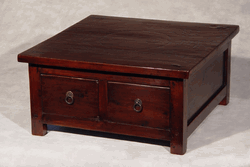Various woods bring different looks and strengths to fine
furniture. One wood that was frequently
favored in furniture made up to the mid-20th century is elm. By
nature, the wood has a durable interlocking grain, which helps make it very
tough. The spread of Dutch elm disease in North America made the wood less
available than in the past.
Historical Uses of Elm Wood
Because of its strong grain, elm got used for coffins, the
seats of chairs, and even for wagon wheel hubs. The wood has been valued around
the world for its durability and resistance to splitting. In Japan, wood from
older, larger elm trees when making Taiko drums. Because the wood resists
splitting, it is possible to tightly nail down the skins for the drumheads.
During the Middle Ages in Europe, the straight grain made the wood valuable for
longbows if yew was not available. Elm is also resistant to decay when it is
permanently wet, which is why it was used for the piers of the original London
Bridge.
Elm In Furniture
You may be able to find elm in use for veneers for surfaces
and paneling. Furniture makers also make use of the rugged durability of elm
for hidden parts of the pieces, such as in the frames, legs and backs of chairs
and sofas. The beauty of the wood does also make it popular for visible
features as well.
Selecting fine furniture should begin with finding a piece
that appeals to you. No particular style is a better choice than any other if
it doesn’t please you. When you want to find a considered selection of handsome
furniture, visit Terra Nova Designs and
check out our pieces. Our collection has been carefully chosen piece by piece,
so we may have something that will be absolutely right for you.


No comments:
Post a Comment